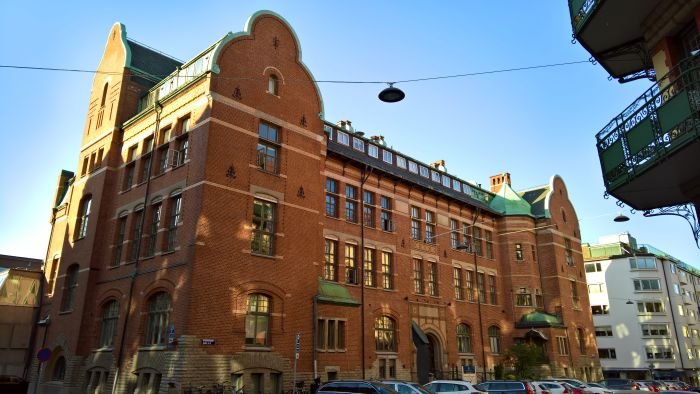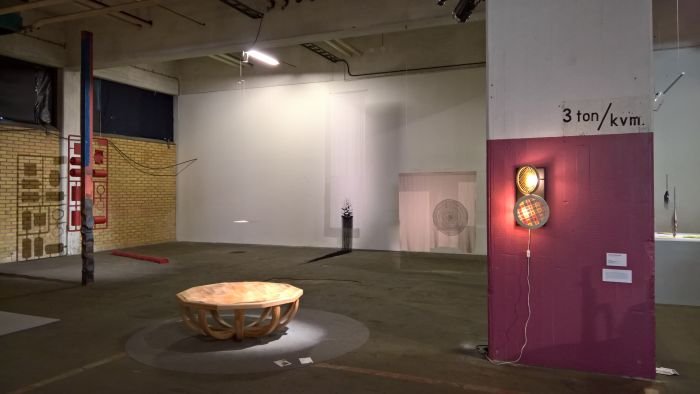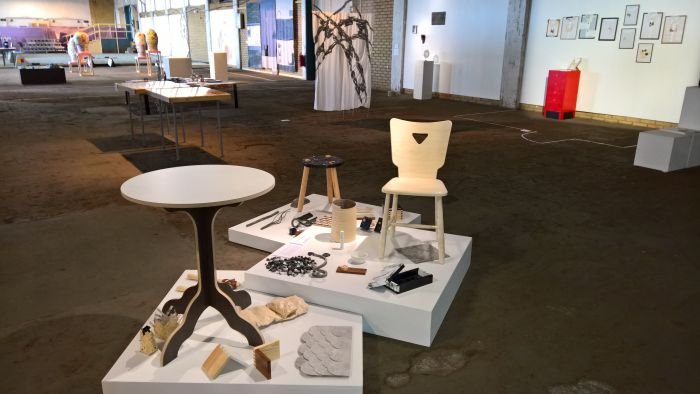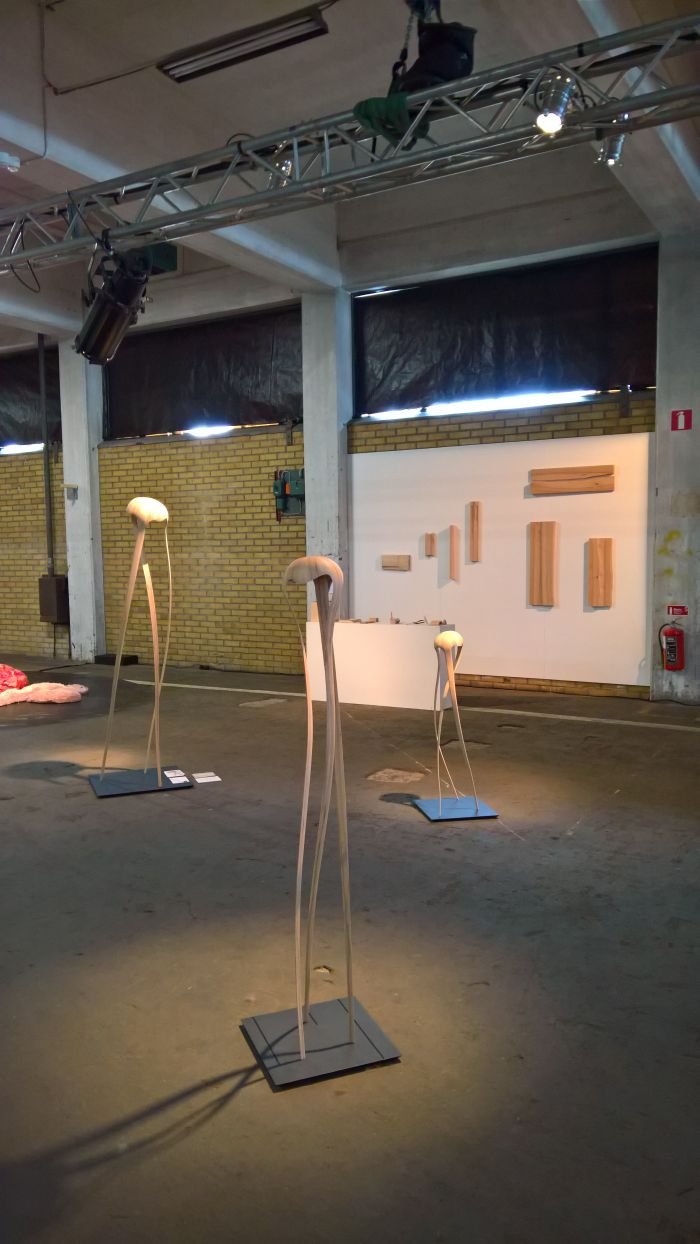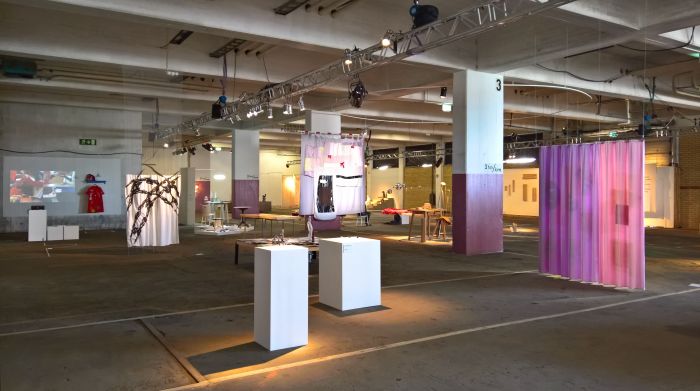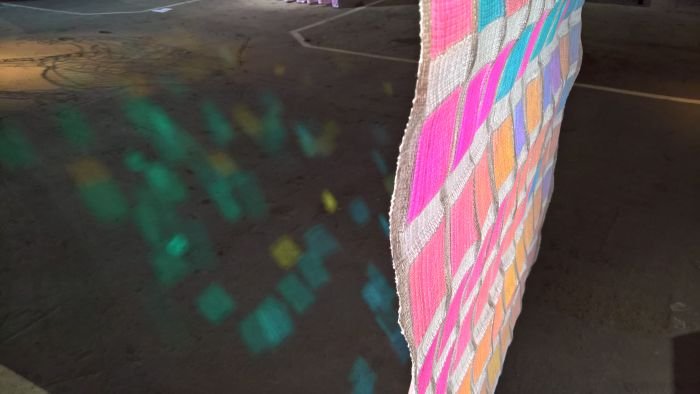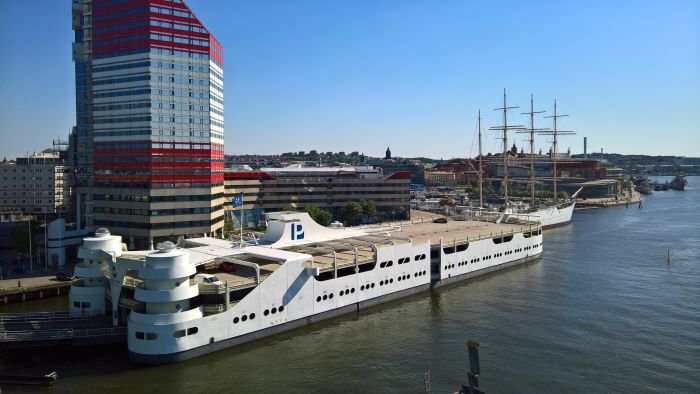Anchored next to the Göta älv Bridge in Gothenburg is a decommissioned ferry. Repurposed as a car park.
While in no way a substitute for an integrated urban transport concept that reduces our dependence on the car, it is a really nice example that recycling, reusing and reappropriating isn't just something for designers, is also a subject for architects and urban planners. And by extrapolation, us all.
Suitably motivated we scaled and crossed the Göta älv Bridge and made our way the 2018 HDK Gothenburg Degree Exhibition.
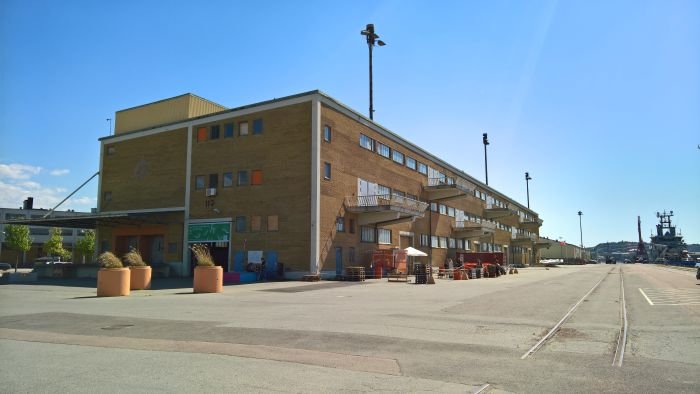
Established in 1848 as the Slöjdföreningens skola - Crafts and Design School - the HDK's biography is similar to the majority of those craft/design/applied art schools established in the course of the 19th century: increasing industrialisation and an ever wider diffusion of education and wealth colliding with new understandings of aesthetics and form to necessitate new approaches to the design and production of objects and architecture of all kinds. Including car parks. Had they been necessary then. The Slöjdföreningens skola was the response of the Society of Crafts and Design in Gothenburg, and, one presumes, regional industry, to those social, cultural, technological and economic changes.
Moving with the spirit of the ages through the death knells of neoclassicism and into the florid extravagance of Art Nouveau, the institution's relevance increased in the first decade of the 20th century through on the one hand a move to encourage freer, individual sketching of objects rather than the faithful copying of existing, best example, objects, practised previously, and on the other through the acquisition of both workshops for practical training and also a new neighbour: the Röhsska craft and design museum. Founded in 1904 through donations by the Gothenburg merchant family Röhss, since its foundation the Röhsska Museum has not only enjoyed a close connection to the HDK, not least through the fact that the two institutions share a building, but has also itself played a key role in the development of furniture design in Sweden: Bruno Mathsson extending his carpentry training with design magazines and books borrowed from the institution's library, thus allowing him to find his way to functionalism and become one of Sweden's most important 20th century furniture designers.
In 1964 Industrial Design was added to the school's programme, in 1966 the institution changed its name to Konstindustriskolan to reflect this new direction, before in 1977 it became incorporated into the University of Gothenburg and in 1989 acquired its current name the, Högskolan för Design och Konsthantverk, HDK, an institute within the university's Faculty of Fine, Applied and Performing Arts.
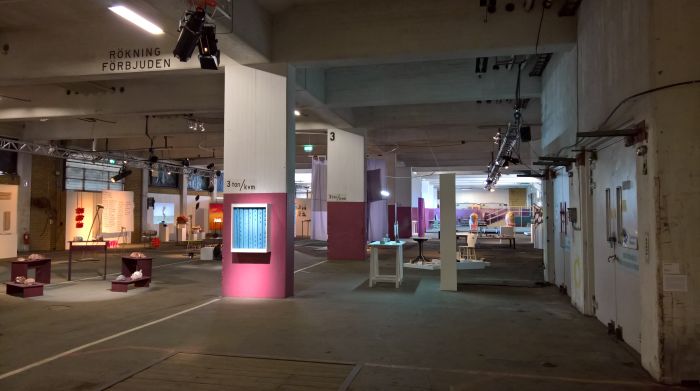
Relocating from their red brick Swedish neo-romantic base in downtown Gothenburg to the banks of the Göta älv and the post-industrial-pre-gentrification calm of the city's Frihamnen harbour district, the 2018 HDK Gothenburg Degree Exhibition presented projects from across the institute's programmes.
Whereby, and cutting straight to the chase, there was no one project which particularly grabbed our attention.
Which is fine. Isn't a complaint. Isn't uncommon. Happens all the time.
In the past however we've tended not to post from those design school exhibitions where less than three projects have grabbed our attention, an approach which has historical reasons, is based in the unique fashion by which this blog is produced; and was an approach which throughout our 2017 #campustour we felt increasingly uneasy with. Yet saw ourselves powerless to change.
However, following an intensive series of workshops and seminars over this past winter a new framework has been developed which allows us to post on all schools visited during the 2018 #campustour. A result which greatly pleases us not only because it is the more honest approach, but for all because if we want to discuss contemporary design education, then the projects students present are in many regards less important than the nature, structures and approaches of the schools. The projects create an unhelpful distortion of focus.
And so for the 2018 #campustour the projects are very much to be considered as the sprinkles atop the ice cream, and not the raison d'etre of the visit to the ice cream parlour.
Which isn't to denigrate the projects or in any sense take anything away from what the students have produced. We don't doubt for a minute that not only the students presenting in Gothenburg, but that of all those students whose work we will see in the coming weeks, have approached their projects in a thoroughly professional, serious fashion and realised a project the school feels is worthy of graduation. But, and as we always note, viewing design projects, as with listening to music, reading books, watching a play or viewing a work of art is as much a subjective act as it is an objective one. A project can be good, can be well conceived, but not speak to us. And we're the ones standing in front of it, contemplating it, considering it, attempting to strike up a conversation with it. And we are far from infallible, are open to everything, will give everything a chance; but also have glaring deficiencies in our articulation and idiosyncrasies that probably require medical attention.
Or put another way, we want to fall in love with everything, but in the vast majority of cases quickly realise there is no spark. And without a spark.....
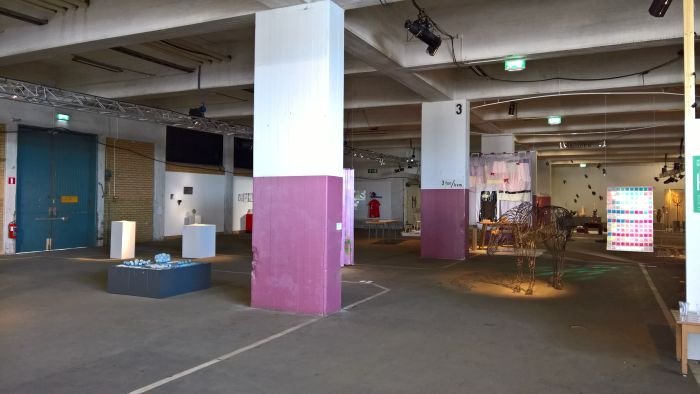
Reflecting the HDK's origins in the years of transformation, and shifting influences, of craft and design, the courses at the HDK are very much of a traditional craft and design ilk; yet ones, at least to judge from the spring 2018 graduation projects, approached by the students with the pleasingly wilful intention of extending the borders and testing their disciplines in fresh waters. Something perhaps best demonstrated by the three projects from the apparently unequivocally titled Bachelor in Wood Orientated Furniture Design: arguably only one of the projects actually concerned itself with the Design of Wood Orientated Furniture, the other two barely acknowledging wood, far less furniture. But not to their detriment. Even if we are still wrestling with one of the projects.
In which context, particularly satisfying about the HDK Gothenburg 2018 Degree Exhibition presentation concept was that the students' written theses were also available; the presentation of such documentation always being welcome and helpful, allowing as it does a deeper insight into the project than that which can necessarily be given by the presentation of just an object. For all in context of those more theoretical projects. Yes, the vast majority were in Swedish and thus thoroughly impenetrable to us, but that's our fault, and we trust and hope those Swedophones who visited made good and fulsome use of the opportunity afforded.
Presenting some 37 projects, more or less perfectly split between Bachelor and Master graduates, the 2018 HDK Gothenburg Degree Exhibition neatly reflected the variety and relevance of contemporary craft and design, reflecting, for example, the critical role of craft and design in questioning contemporary society; the explorative role of craft and design in helping develop our understandings of materials new and old; the contemplative role of craft and design in helping us understand the world around us; the innovative role of craft and design in the realisation of new solutions for daily life. And thus a range of projects and positions which very much gave the impression that the HDK Gothenburg continues to perform that role for which it was established, albeit in a world, and via manners and applications of design thinking, its founders could never have imagined.
Full details on the HDK Gothenburg can be found at https://hdk.gu.se
And all 2018 HDK Gothenburg Degree Exhibition projects can be found at https://hdkexamen.gu.se
